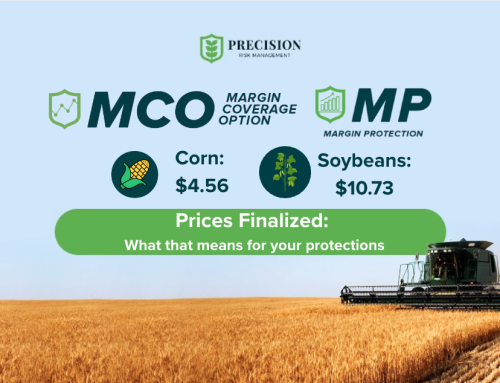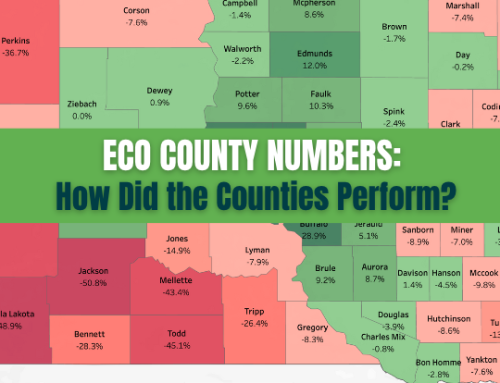The Top Producer Summit brings together some of the largest and most efficient producers in North America. These producers connect to learn how to turn their great operations into even better ones. It is a place of workshops, industry leader presenters, and top-performing peer speakers. Ideas and advice flowed on Day 1 of the Top Producer Summit.
Key takeaways
- Successful operations need passion, ideology, and behavior alignment with every person in the operation and it is determined by the leader
- Future of farming will require adoption of “relentless innovations”
- Managing a boom-and-bust economy requires long-term planning
- Markets are changing toward more consumer-centric, planet-friendly, and connected systems.
- Tech-first farm offices give you a competitive advantage
- Washington politics are uncertain while the new Farm Bill is being debated
Passion for Producing
The summit began with a large topic: what steps do excellent organizations and operations take to become excellent? Dave Mitchell argued one of the most important metrics is passion. A leader of an organization or operation needs to have a burning passion for what they do. The leader needs to live and breathe farming in crowded environments.
But it is not enough for only the leader to hold this passion. The leader needs to create an ideology to foster passion in the rest of the operation. The ideology will dictate the behavior of everyone involved. Passion, ideology, and behavior need to be aligned with every person in the operation. If every stakeholder is aligned, an operation is much more likely to be successful. It all begins with the passion of the leader.
Farm Office Innovation
The modern farm office creates a competitive advantage and may be worth investing in this year. Data will become even more important for efficient operations. Ensuring you have IT needs and skill gaps filled is vital to stay ahead.
Capturing all the data across the farm is step one. Collecting all the data with precision technology allows growers to find insights for a better operation. Capturing it isn’t enough. Growers need a tech-first farm office that captures it in a standardized way to quickly ensure accuracy each time. These technologies and processes allow growers to be more efficient and produce a competitive advantage
Consumer Market Trends
Who a consumer is and what they want is changing, said Rob Dongoski with Ernst & Young. Millennials and Gen Z are interacting with food differently than previous generations. The food and ag ecosystems are being driven to a future food system that is more consumer-centric, planet friendly, and interconnected.
Younger consumers want to know who their producer is and ask them questions about what they are eating. The younger consumer is not necessarily looking for local but transparency of production and access to the producer themselves. These consumers are wanting to know each step of the supply chain. From beginning to end, they want to know if they are planet friendly. It is important as producers to know where their crops are going because the consumer is asking where it is coming from.
Politics of Ag
In Washington, uncertainty prevails, according to Jim Wiesemeyer at Pro Farmer and Farm Journal. With a divided Congress and limited majorities in both chambers, predicting how politics are going to affect agriculture with any certainty is difficult. It is anticipated the new Republican House will take on trade and border security again. Both could have repercussions on ag. What is certain is that no one knows how the war in Ukraine is going to end. Markets will continue to be disrupted. The level of disruption will vary with how much planting Ukraine is able to complete while the fighting continues.
The 19th Farm Bill is being debated now. With all new legislation, the bill could be a lengthy process. If no agreement is made, Mr. Wiesemeyer predicts the current bill will be extended until a new bill is passed. Both House and Senate committees are looking at the ad hoc disaster programs to see how the farmer safety net can be improved. Crop insurance shouldn’t see many changes. If there are changes, it is likely for the better of the farmer. Crop insurance has bipartisan support across the aisle. If any changes occur, PRM will break down how they will affect you.
Ethanol Expansion
Ethanol is about 35% of corn demand, according to the National Corn Growers Association. They are looking for ways to expand ethanol demand. They are seeing and pushing for an expansion of Fuel Dispenser Infrastructure (gas pumps that have ethanol). More pumps providing ethanol help drive demand for ethanol and corn.
The National Corn Growers Association is also targeting and messaging government officials for the expansion of ethanol-friendly policies. In their survey work, they found 51% of government officials have a positive view of ethanol. Multiple ethanol policies are working through government agencies and Congress to improve ethanol demand and supply. One example is the Next Generation Fuel Act. The bill entices automakers to design more engines to use higher ethanol blends. It will be re-introduced this next session hoping to be passed with bipartisan support.
Prenups
A surprising topic was the use of prenups are not just for movie stars and celebrities. Prenup agreements are an important part of estate planning, said estate planner, Polly Dobbs. A marriage certificate gives a lot of property rights to an operation. Dobbs said prenups are not only important for the young but those in their golden years as well. In later-stage marriages, a prenup can protect children’s inheritance rights if that is what the landowner wants for their estate planning.
Surviving Booms and Busts
Shay Foulk at Ag View Solutions wants you to have a windshield view instead of a rearview mirror for surviving boom and bust economies. Long-term planning is essential for balancing out the low/negative ROI years with high ROI years we have seen recently. Over the last 10 years, average ROIs for corn have been 14.4%. With lows of 0.5% in 2016 and highs of 33.2% in 2022. Without long-term planning, those low ROI years can devastate an operation.
Foulk said you can’t measure success unless you have created goals. Successful operations need to have at least a 3-to-5-year goal statement in place and actively work toward it. Next, successful growers need to have an 8-to-10-year working capital plan. All capital-intense projects such as building, land, and livestock capacity need to be accounted for. Putting dollars to paper helps growers stay on the plan much better than the goals we have in our minds. Planning for a transition should be in every successful operation’s long-term plan. A 25-to-30-year outlook with succession planning keeps an operation productive when the time comes.






